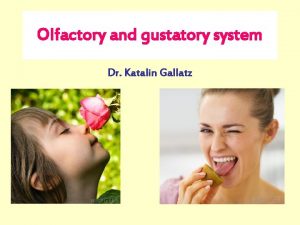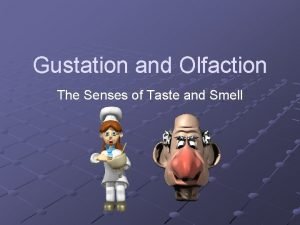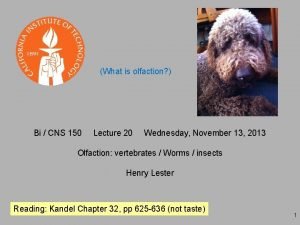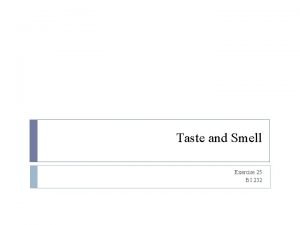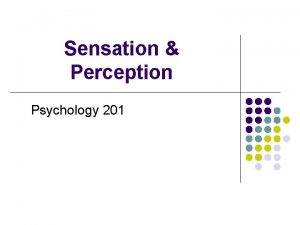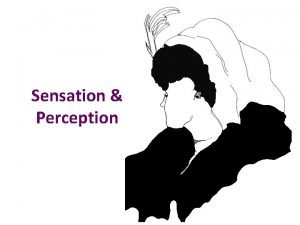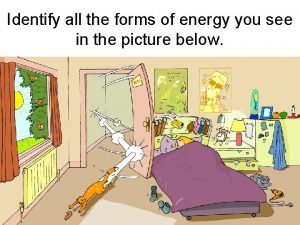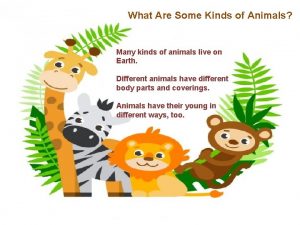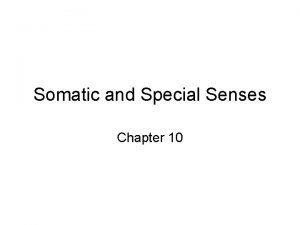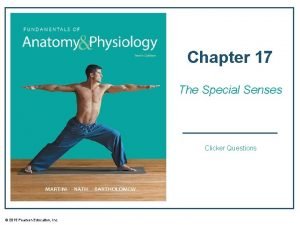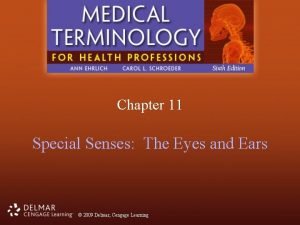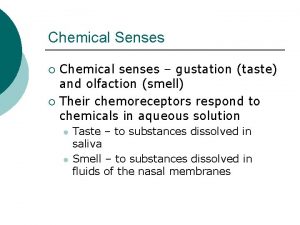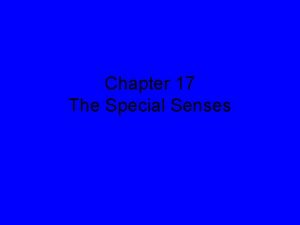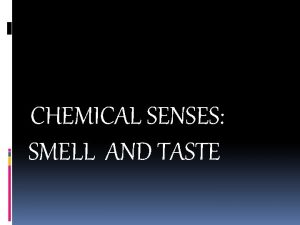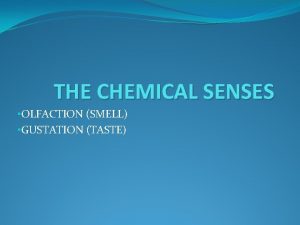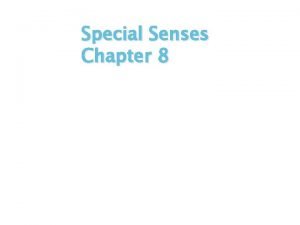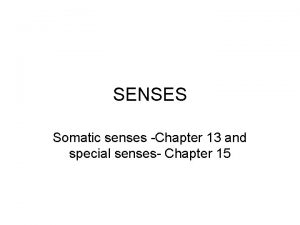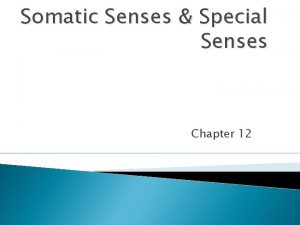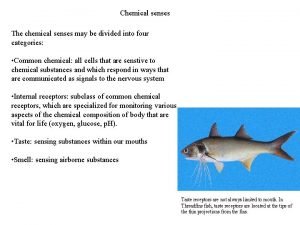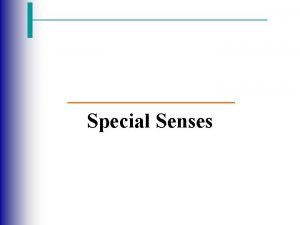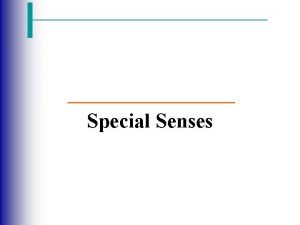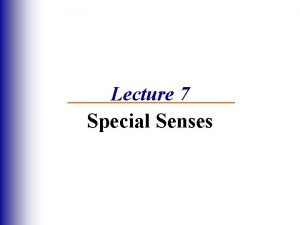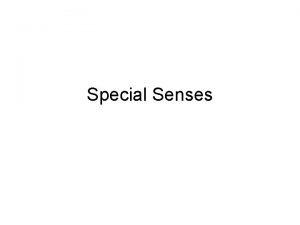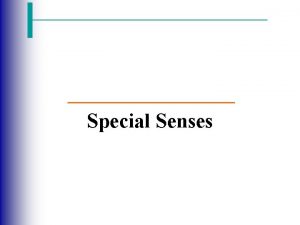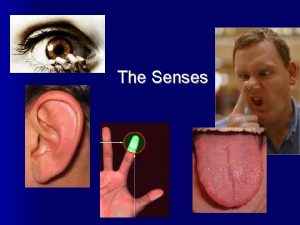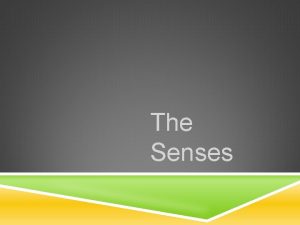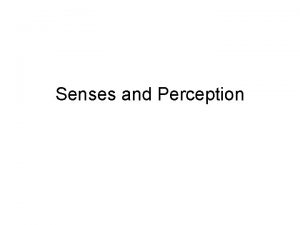Chapter 14 The Chemical Senses Olfaction many kinds
























- Slides: 24

Chapter 14 The Chemical Senses

• Olfaction - many kinds of information • Taste (gustation) - food information • Trigeminal - noxious information

Olfactory System • Anatomy • Olfactory epithelium--> olfactory bulb--> olfatory tract --> pyriform cortex and other forebrain structures, amygdala and hypothalamus.



The map of olfactory processing in the brain • Not really understood

What can we smell? • Airborne odours • Concentration: – e. g. (pizza odour) IBMP, 2 n. M – similar chemical structures are perceived differently, e. g. spearmint and caraway seeds


What can we smell? • Changes with age – E. g. Children smell crayons – Adults, oregano is pleasant

Concentration differences • Floral in low dose is pleasant – Is putrid in high dose

mixtures • Most odours are composed of very many chemicals. – E. g. stawberry odor has about 60 compounds

Old age • Loose ability to correctly identify an odor. • The corresponding region of the brain is not active too.

Physiological and behavioural responses to odours. • Visceral responses: Smell food--> salivation and gastric motility – Noxious smell-->gag

Physiological and behavioural responses to odours. • Reproductive and endocrine functions – Women housed together synchronize menstral cycles – Smelling gauze pads from underarms of women also synchronizes menstral cycles.

Physiological and behavioural responses to odours. • Infants recognize mothers by scent • Mothers can recognize the scent her baby.

Pheromones Species specific odorants. Some pheromones stimulate the vomeronasal organ VNO--> accessory olfactory bulb->hypothalamus. (Found in 8% of human adults), VNO receptors are pseudogenes in humans.



Olfactory receptor (sensory) neuron • In the olfactory epithelium • Have cilia projecting into the nasal cavity mucus • These cells become damaged, and turnover.



Transduction


Two olfactory subsystems • Main • Vomeronasal
 Distinguish between general senses and special senses.
Distinguish between general senses and special senses. Messiners
Messiners Thanks for your attention doctor
Thanks for your attention doctor Gustation and olfaction
Gustation and olfaction Olfaction
Olfaction Chemoreceptor example
Chemoreceptor example Facts about taste
Facts about taste Perception
Perception Absolute threshold psychology definition
Absolute threshold psychology definition Chapter 7 chemical formulas and chemical compounds test
Chapter 7 chemical formulas and chemical compounds test Chemical formulas and chemical compounds chapter 7 review
Chemical formulas and chemical compounds chapter 7 review Chapter 18 chemical reactions balancing chemical equations
Chapter 18 chemical reactions balancing chemical equations These are many kinds of sport
These are many kinds of sport There are many different kinds of sports
There are many different kinds of sports Work-energy theorem formula
Work-energy theorem formula How many kinds of energy are there
How many kinds of energy are there How many kinds of letter are there
How many kinds of letter are there Two types of animals
Two types of animals Greek love
Greek love How many types of sports are there
How many types of sports are there Direct and indirect structure
Direct and indirect structure Chapter 10 somatic and special senses
Chapter 10 somatic and special senses Chapter 17 special senses answer key
Chapter 17 special senses answer key Learning exercises chapter 11 medical terminology
Learning exercises chapter 11 medical terminology Anatomy and physiology chapter 8 special senses
Anatomy and physiology chapter 8 special senses


